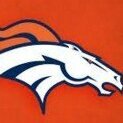New road – Chareon Krung
-
Recently Browsing 0 members
- No registered users viewing this page.
-
Topics
-
-
Popular Contributors
-
-
Latest posts...
-
149
Finance Tax Break Bonanza: Thais to Benefit from New Foreign Income Rule
I think so too. This government are so behind the eight ball now, this is probably way down their political list of things to table, never mind try to pass all readings of a new bill or even pass an amendment. -
28
Middle East Israel's security cabinet approves plan to take control of Gaza
That was the exact point that I was making . That's why I got confused, because you made the same point back to me So, you were agreeing with me . -
27
secured credit cards?
Exactly. They are a useful tool for some people. Basically expats in Thailand who for whatever reason want to have a Thailand based CREDIT card (as opposed to debit) who can't otherwise get such a card here without a secured deposit. -
22
Middle East IRAN’S AYATOLLAH TARGETS TRUMP FOR ASSASSINATION!
A post with a link to a paywall site and the replies have been removed. -
23
Israel slaughters 5 more journalists
Yeah, sure — just a journalist. I totally believe you.🤔- 1
-

-
7
47's weaponization of the DOJ shows the US is now a dictatorship
Remember when the op and others were sure trump would go to jail and Biden was on point. None of these people will go to jail. Both sides are scum.
-
-
Popular in The Pub












Recommended Posts
Create an account or sign in to comment
You need to be a member in order to leave a comment
Create an account
Sign up for a new account in our community. It's easy!
Register a new accountSign in
Already have an account? Sign in here.
Sign In Now